Deep Learning for Video Application in Cooperative Vehicle-Infrastructure System: A Comprehensive Survey
Abstract
:1. Introduction
2. Traditional Video Application Methods over CVIS
3. Video Application Based on Deep Learning Algorithm
- Generative deep architecture: this architecture can be described as a model for generating data which belongs to a probability model. Through the joint probability distribution of the observed data and the corresponding categories, the feature set of the generated data contains the high-order correlation features of the input dataset, which is more like an unsupervised learning method;
- Discriminant deep architecture: this architecture classifies patterns through its own discriminant ability, which estimates a posteriori probability through the conditional probability distribution of the observed data, similar to a kind of supervised learning;
- Mixed deep architecture: this architecture combines the advantages of generative and discriminative deep architecture, and has excellent expression ability and discriminant ability.
3.1. Generative Deep Architecture
3.2. Discriminant Deep Architecture
3.2.1. CNN
3.2.2. RNN
4. Video Application Based on Deep Reinforcement Learning Algorithm
- Deep reinforcement learning algorithm based on value function: the algorithm mainly evaluates the Q-value generated by all actions, selects the action according to the Q-value and obtains the optimal strategy indirectly through the value function;
- Policy gradient algorithm: the algorithm parameterizes the strategy, uses the weight parameters of the depth neural network to represent the strategy, optimizes the strategy through the gradient method and constantly modifies the parameters and gradually obtains the optimal strategy. The policy gradient algorithm is an algorithm to solve the optimal policy directly;
- Multi-agent deep reinforcement learning: multiple agents choose the corresponding actions according to the current environment, establish different reward functions according to the relationship between agents and solve the optimal strategy.
4.1. Deep Reinforcement Learning Algorithm Based on Value Function
4.2. Policy Gradient Algorithm
4.3. Multi-Agent Deep Reinforcement Learning
| Author | State | Action | Reward | Research Content |
|---|---|---|---|---|
| Chen [88] | Unload target, computing resource information, available bandwidth and vehicle location information. | Whether to uninstall target and computing resources and available bandwidth allocation. | Task completion utility. | Intelligent allocation of edge computing resources and channel resources. |
| Dai [89] | Communication rate, energy consumption, driving direction, content delivery delay and storage capacity. | Match cache pair. | System utility. | Implement blockchain-enabling content cache security and privacy protection. |
| Kwon [90] | Preloaded video size, cache occupancy, average video quality and location information. | Power allocation and cache allocation. | Quality change, packet loss and video interruption. | Millimeter wave-based station power control and active buffer allocation method. |
| Lan [91] | Computing and caching capabilities. | Calculate the uninstall and service caching policy. | Task processing delay and energy consumption. | Optimization of joint computing offload and service cache. |
| Yun [92] | Location information, transmission queue status, receiving area status, number of blocks and average quality. | Whether to unload, unload quantity and block quality. | Quality enhancement, avoiding packet loss and video freeze. | Video streaming transmission scheme for mobile-aware vehicle network. |
| Zhang [93] | Video data transmission status, local view set status and vehicle association status with RSU. | A combination of the view set and memory allocation. | Download cost, data loss and video freeze cost. | Active caching of multi-view 3D video in 5G network. |
5. Datasets and Model Performance Evaluation Metrics
5.1. Datasets
5.2. Average Delay
5.3. QOE
5.4. Accuracy, Recall, Precision and F-Measure
- True Positive (TP): the positive result is predicted to be positive;
- True Negative (TN): the negative result is predicted to be negative;
- False Positive (FP): the negative result is predicted to be positive;
- False Negative (FN): the negative result is predicted to be negative.
6. Discussion
- In order to restore the real environment and reflect more real data characteristics when building a model based on deep learning, it is a problem worthy of in-depth study to integrate the traffic characteristics such as the high-speed mobility of vehicles and the short life of channel links;
- Due to the access environment of workshop communication being open, it will face the risk of malicious attacks in the CVIS environment [98,99]. Therefore, the security of vehicle communication needs to be paid enough attention, and it is necessary to design algorithms based on deep learning to solve network security problems and avoid video content transmission errors, identity authentication failures and network intrusion;
- When facing large-scale traffic datasets, the model based on deep learning is slightly insufficient in terms of training speed and precision, so how to improve the training speed on the premise of ensuring precision is a problem that needs to be paid attention, so as to improve the training efficiency of the deep learning model;
- Because of the single training environment, the deep learning algorithm has poor model transfer in the complex and changeable CVIS environment. Therefore, improving the generalization ability of the deep learning model is also the direction of optimizing the deep learning algorithm.
Author Contributions
Funding
Institutional Review Board Statement
Informed Consent Statement
Data Availability Statement
Conflicts of Interest
References
- Zhou, H.; Xu, W.; Chen, J.; Wang, W. Evolutionary V2X Technologies Toward the Internet of Vehicles: Challenges and Opportunities. Proc. IEEE 2020, 108, 308–323. [Google Scholar] [CrossRef]
- Hinton, G.E.; Osindero, S.; Teh, Y.-W. A Fast Learning Algorithm for Deep Belief Nets. Neural Comput. 2006, 18, 1527–1554. [Google Scholar] [CrossRef]
- Jiang, X.; Song, T.; Shi, W.; Katayama, T.; Shimamoto, T.; Wang, L. Fast Coding Unit Size Decision Based on Probabilistic Graphical Model in High Efficiency Video Coding Inter Prediction. IEICE Trans. Inf. Syst. 2016, 99, 2836–2839. [Google Scholar] [CrossRef] [Green Version]
- Jiang, X.; Feng, J.; Song, T.; Katayama, T. Low-Complexity and Hardware-Friendly H.265/HEVC Encoder for Vehicular Ad-Hoc Networks. Sensors 2019, 19, 1927. [Google Scholar] [CrossRef] [Green Version]
- Jiang, X.; Song, T.; Zhu, D.; Katayama, T.; Wang, L. Quality-Oriented Perceptual HEVC Based on the Spatiotemporal Saliency Detection Model. Entropy 2019, 21, 165. [Google Scholar] [CrossRef] [Green Version]
- Cai, L.; Xiang, S.; Luo, Y.; Pan, J. Scalable Modulation for Video Transmission in Wireless Networks. IEEE Trans. Veh. Technol. 2011, 60, 4314–4323. [Google Scholar] [CrossRef] [Green Version]
- Belyaev, E.; Vinel, A.; Surak, A.; Gabbouj, M.; Jonsson, M.; Egiazarian, K. Robust vehicle-to-infrastructure video transmission for road surveillance applications. IEEE Trans. Veh. Technol. 2014, 64, 2991–3003. [Google Scholar] [CrossRef]
- Zhang, X.; Lv, T.; Yang, S. Near-Optimal Layer Placement for Scalable Videos in Cache-Enabled Small-Cell Networks. IEEE Trans. Veh. Technol. 2018, 67, 9047–9051. [Google Scholar] [CrossRef]
- Ali, A.; Kwak, K.S.; Tran, N.H.; Han, Z.; Niyato, D.; Zeshan, F.; Gul, M.T.; Suh, D.Y. RaptorQ-Based Efficient Multimedia Transmission Over Cooperative Cellular Cognitive Radio Networks. IEEE Trans. Veh. Technol. 2018, 67, 7275–7289. [Google Scholar] [CrossRef]
- Zaidi, S.; Bitam, S.; Mellouk, A. Enhanced Adaptive Sub-Packet Forward Error Correction Mechanism for Video Streaming in VANET. In Proceedings of the 2016 IEEE Global Communications Conference (GLOBECOM), Washington, DC, USA, 4–8 December 2016; pp. 1–6. [Google Scholar] [CrossRef]
- Zhu, C.; Huo, Y.; Zhang, B.; Zhang, R.; El-Hajjar, M.; Hanzo, L. Adaptive-Truncated-HARQ-Aided Layered Video Streaming Relying on Interlayer FEC Coding. IEEE Trans. Veh. Technol. 2016, 65, 1506–1521. [Google Scholar] [CrossRef] [Green Version]
- Joshi, J.; Jain, K.; Agarwal, Y.; Deka, M.J.; Tuteja, P. COMIP: Cluster based overlay and fast handoff mobile IP system for video streaming in VANET’s. In Proceedings of the 2015 IEEE 3rd International Conference on Smart Instrumentation, Measurement and Applications (ICSIMA), Kuala Lumpur, Malaysia, 24–25 November 2015; pp. 1–6. [Google Scholar] [CrossRef]
- Yaacoub, E.; Filali, F.; Abu-Dayya, A. QoE Enhancement of SVC Video Streaming Over Vehicular Networks Using Cooperative LTE/802.11p Communications. IEEE J. Sel. Top. Signal Processing 2015, 9, 37–49. [Google Scholar] [CrossRef]
- Ben Brahim, M.; Hameed Mir, Z.; Znaidi, W.; Filali, F.; Hamdi, N. QoS-Aware Video Transmission Over Hybrid Wireless Network for Connected Vehicles. IEEE Access 2017, 5, 8313–8323. [Google Scholar] [CrossRef]
- Shen, X.; Li, J.; Chen, L.; Chen, J.; He, S. Heterogeneous LTE/DSRC Approach to Support Real-time Vehicular Communications. In Proceedings of the 2018 10th International Conference on Advanced Infocomm Technology (ICAIT), Stockholm, Sweden, 12–15 August 2018; pp. 122–127. [Google Scholar] [CrossRef]
- Xie, H.; Boukerche, A.; Loureiro, A.A.F. A Multipath Video Streaming Solution for Vehicular Networks with Link Disjoint and Node-disjoint. IEEE Trans. Parallel Distrib. Syst. 2015, 26, 3223–3235. [Google Scholar] [CrossRef]
- Aliyu, A.; Abdullah, A.H.; Aslam, N.; Altameem, A.; Radzi, R.Z.; Kharel, R.; Mahmud, M.; Prakash, S.; Joda, U.M. Interference-Aware Multipath Video Streaming in Vehicular Environments. IEEE Access 2018, 6, 47610–47626. [Google Scholar] [CrossRef]
- Guo, Y.; Yang, Q.; Yu, F.R.; Leung, V.C.M. Cache-Enabled Adaptive Video Streaming Over Vehicular Networks: A Dynamic Approach. IEEE Trans. Veh. Technol. 2018, 67, 5445–5459. [Google Scholar] [CrossRef]
- Liu, X.; Zhao, N.; Yu, F.R.; Chen, Y.; Tang, J.; Leung, V.C.M. Cooperative Video Transmission Strategies via Caching in Small-Cell Networks. IEEE Trans. Veh. Technol. 2018, 67, 12204–12217. [Google Scholar] [CrossRef] [Green Version]
- Liu, Z.; Song, H.; Pan, D. Distributed Video Content Caching Policy with Deep Learning Approaches for D2D Communication. IEEE Trans. Veh. Technol. 2020, 69, 15644–15655. [Google Scholar] [CrossRef]
- Sun, R.; Wang, Y.; Cheng, N.; Lyu, L.; Zhang, S.; Zhou, H.; Shen, X. QoE-Driven Transmission-Aware Cache Placement and Cooperative Beamforming Design in Cloud-RANs. IEEE Trans. Veh. Technol. 2020, 69, 636–650. [Google Scholar] [CrossRef]
- Sriram, R.T.; Teja, T.; Chikkakrishna, N.K. Application of Machine Learning Techniques in Delay Modelling for Heterogenous Signalized Intersections. In Proceedings of the 2020 Fourth International Conference on I-SMAC (IoT in Social, Mobile, Analytics and Cloud) (I-SMAC), Palladam, India, 7–9 October 2020; pp. 618–622. [Google Scholar] [CrossRef]
- Olayode, I.O.; Tartibu, L.K.; Okwu, M.O. Prediction and modeling of traffic flow of human-driven vehicles at a signalized road intersection using artificial neural network model: A South African road transportation system scenario. Transp. Eng. 2021, 6, 100095. [Google Scholar] [CrossRef]
- Erfani, S.M.; Rajasegarar, S.; Karunasekera, S.; Leckie, C. High-dimensional and large-scale anomaly detection using a linear one-class SVM with deep learning. Pattern Recognit. 2016, 58, 121–134. [Google Scholar] [CrossRef]
- Bengio, Y.; Delalleau, O. On the Expressive Power of Deep Architectures; Springer: Berlin/Heidelberg, Germany, 2011; pp. 18–36. [Google Scholar] [CrossRef]
- LeCun, Y.; Bengio, Y.; Hinton, G. Deep learning. Nature 2015, 521, 436–444. [Google Scholar] [CrossRef]
- Zhang, T.; Chen, X.; Xu, C. Intelligent Routing Algorithm Based on Deep Belief Network for Multimedia Service in Knowledge Centric VANETs. In Proceedings of the 2018 International Conference on Networking and Network Applications (NaNA), Xi’an, China, 12–15 October 2018; pp. 1–6. [Google Scholar] [CrossRef]
- Hao, H.; Xu, C.; Wang, M.; Xie, H.; Liu, Y.; Wu, D.O. Knowledge-centric proactive edge caching over mobile content distribution network. In Proceedings of the IEEE INFOCOM 2018—IEEE Conference on Computer Communications Workshops (INFOCOM WKSHPS), Honolulu, HI, USA, 15–19 April 2018; pp. 450–455. [Google Scholar] [CrossRef]
- Lecun, Y.; Bottou, L.; Bengio, Y.; Haffner, P. Gradient-based learning applied to document recognition. Proc. IEEE 1998, 86, 2278–2324. [Google Scholar] [CrossRef] [Green Version]
- Rawat, W.; Wang, Z. Deep Convolutional Neural Networks for Image Classification: A Comprehensive Review. Neural Comput. 2017, 29, 2352–2449. [Google Scholar] [CrossRef]
- Gu, J.; Wang, Z.; Kuen, J.; Ma, L.; Shahroudy, A.; Shuai, B.; Liu, T.; Wang, X.; Wang, G. Recent Advances in Convolutional Neural Networks. Pattern Recognit. 2015, 77, 354–377. [Google Scholar] [CrossRef] [Green Version]
- Sainath, T.N.; Mohamed, A.; Kingsbury, B.; Ramabhadran, B. Deep convolutional neural networks for LVCSR. In Proceedings of the 2013 IEEE International Conference on Acoustics, Speech and Signal Processing, Vancouver, BC, Canada, 26–31 May 2013; pp. 8614–8618. [Google Scholar] [CrossRef]
- Wang, Z. Applications of Objective Image Quality Assessment Methods. Signal Process. Mag. IEEE 2011, 28, 137–142. [Google Scholar] [CrossRef]
- Samil, K.; Merve, K.Y.; Kadir, K.; Ferhat, S.R.; Gultekin, B.; Hazım, K.E. How Image Degradations Affect Deep CNN-based Face Recognition. arXiv 2016, arXiv:1608.05246. [Google Scholar] [CrossRef] [Green Version]
- Varga, D. No-Reference Image Quality Assessment with Convolutional Neural Networks and Decision Fusion. Appl. Sci. 2022, 12, 101. [Google Scholar] [CrossRef]
- Chen, H.; Aggarwal, P.; Taha, T.M.; Chodavarapu, V.P. Improving Inertial Sensor by Reducing Errors using Deep Learning Methodology. In Proceedings of the IEEE National Aerospace and Electronics Conference (NAECON), Dayton, OH, USA, 23–26 July 2018; pp. 197–202. [Google Scholar] [CrossRef]
- Kumar, K.N.; Pawar, D.S.; Mohan, C.K. Open-air Off-street Vehicle Parking Management System Using Deep Neural Networks: A Case Study. In Proceedings of the 2022 14th International Conference on COMmunication Systems & NETworkS (COMSNETS), Bangalore, India, 4–8 January 2022; pp. 800–805. [Google Scholar] [CrossRef]
- Jeon, H.S.; Kum, D.S.; Jeong, W.Y. Traffic Scene Prediction via Deep Learning: Introduction of Multi-Channel Occupancy Grid Map as a Scene Representation. In Proceedings of the IEEE Intelligent Vehicles Symposium (IV), Changshu, China, 26–30 June 2018; pp. 1496–1501. [Google Scholar] [CrossRef]
- Akilan, T.; Wu, Q.M.J.; Zhang, W. Video Foreground Extraction Using Multi-View Receptive Field and Encoder–Decoder DCNN for Traffic and Surveillance Applications. IEEE Trans. Veh. Technol. 2019, 68, 9478–9493. [Google Scholar] [CrossRef]
- Shobha, B.S.; Deepu, R. Deep learning assisted active net segmentation of vehicles for smart traffic management. Glob. Transit. Proc. 2021, 2, 282–286. [Google Scholar] [CrossRef]
- Ma, B.; Xiu, L.; Zhu, K.; Zhang, L. An Intelligent Cooperative Vision Perception System for Connected Vehicles via IPv6. In Proceedings of the 2018 IEEE/CIC International Conference on Communications in China (ICCC), Beijing, China, 16–18 August 2018; pp. 485–489. [Google Scholar] [CrossRef]
- Guo, J.; Song, B.; Yu, F.R.; Chi, Y.; Yuen, C. Fast Video Frame Correlation Analysis for Vehicular Networks by Using CVS–CNN. IEEE Trans. Veh. Technol. 2019, 68, 6286–6292. [Google Scholar] [CrossRef]
- Jeong, S.; Jeon, B.; Chung, B.; Kim, H.K. Convolutional neural network-based intrusion detection system for AVTP streams in automotive Ethernet-based networks. Veh. Commun. 2021, 29, 100338. [Google Scholar] [CrossRef]
- Madhumitha, G.; Senthilnathan, R.; Ayaz, K.M.; Vignesh, J.; Madhu, K. Estimation of Collision Priority on Traffic Videos using Deep Learning. In Proceedings of the 2020 IEEE International Conference on Machine Learning and Applied Network Technologies (ICMLANT), Hyderabad, India, 20–21 December 2020; pp. 1–6. [Google Scholar] [CrossRef]
- Wang, Q.; Wan, J.; Li, X. Robust Hierarchical Deep Learning for Vehicular Management. IEEE Trans. Veh. Technol. 2019, 68, 4148–4156. [Google Scholar] [CrossRef]
- Girshick, R.; Donahue, J.; Darrell, T.; Malik, J. Rich feature hierarchies for accurate object detection and semantic segmentation. In Proceedings of the 27th IEEE Conference on Computer Vision and Pattern Recognition (CVPR), Columbus, OH, USA, 23–28 June 2014; pp. 580–587. [Google Scholar] [CrossRef] [Green Version]
- Priyadharshini, P.; Karthikeyan, P. Vehicle Data Aggregation from Highway Video of Madurai City Using Convolution Neural Network. Procedia Comput. Sci. 2020, 171, 1642–1650. [Google Scholar] [CrossRef]
- Kamran, F.; Shahzad, M.; Shafait, F. Automated Military Vehicle Detection from Low-Altitude Aerial Images. In Proceedings of the International Conference on Digital Image Computing—Techniques and Applications (DICTA), Canberra, Australia, 10–13 December 2018; pp. 741–748. [Google Scholar] [CrossRef]
- Redmon, J.; Divvala, S.; Girshick, R.; Farhadi, A. You Only Look Once: Unified, Real-Time Object Detection. arXiv 2015, arXiv:1506.02640. [Google Scholar] [CrossRef]
- Seal, A.; Bhattacharya, S.; Mukherjee, A. Fog computing for real-time accident identification and related congestion control. In Proceedings of the 2019 IEEE International Systems Conference (SysCon), Orlando, FL, USA, 8–11 April 2019. [Google Scholar] [CrossRef]
- Tung Lam, P.; Huy, N.; Hoan, N.; Van Hoa, N.; Van, B.; Yeong Min, J. Object Detection Framework for High Mobility Vehicles Tracking in Night-time. In Proceedings of the 2020 International Conference on Artificial Intelligence in Information and Communication (ICAIIC), Fukuoka, Japan, 19–21 February 2020; pp. 133–135. [Google Scholar] [CrossRef]
- Farias, H.; Solar, M.; Ortiz, D. A Deep Learning Tool to Classify Vehicles in Real Time. In Proceedings of the 2021 8th International Conference on eDemocracy & eGovernment (ICEDEG), Quinto, Ecuador, 28–30 July 2021; pp. 215–218. [Google Scholar] [CrossRef]
- Song, J.; Zhao, C.; Lin, T.; Li, X.; Prishchepov, A.V. Spatio-temporal patterns of traffic-related air pollutant emissions in different urban functional zones estimated by real-time video and deep learning technique. J. Clean. Prod. 2019, 238, 117881. [Google Scholar] [CrossRef]
- Sreekumar, U.K.; Devaraj, R.; Li, Q.; Liu, K. Real-Time Traffic Pattern Collection and Analysis Model for Intelligent Traffic Intersection. In Proceedings of the 2018 IEEE International Conference on Edge Computing (EDGE), San Francisco, CA, USA, 2–7 July 2018; pp. 140–143. [Google Scholar] [CrossRef]
- Huang, L.; Xu, W.J.; Liu, S.; Pandey, V.; Juri, N.R. Enabling Versatile Analysis of Large Scale Traffic Video Data with Deep Learning and HiveQL. In Proceedings of the IEEE International Conference on Big Data (IEEE Big Data), Boston, MA, USA, 11–14 December 2017; pp. 1153–1162. [Google Scholar] [CrossRef]
- Pineda, F.J. Generalization of back-propagation to recurrent neural networks. Phys. Rev. Letters. 1987, 59, 2229–2232. [Google Scholar] [CrossRef]
- Bengio, Y.; Simard, P.; Frasconi, P. Learning long-term dependencies with gradient descent is difficult. IEEE Trans. Neural Netw. 1994, 5, 157–166. [Google Scholar] [CrossRef]
- Hochreiter, S.; Schmidhuber, J. Long Short-Term Memory. Neural Comput. 1997, 9, 1735–1780. [Google Scholar] [CrossRef]
- Kulkarni, A.; Seetharam, A.; Ramesh, A.; Herath, J.D. DeepChannel: Wireless Channel Quality Prediction Using Deep Learning. IEEE Trans. Veh. Technol. 2020, 69, 443–456. [Google Scholar] [CrossRef]
- Xing, Y.; Lv, C.; Cao, D.; Velenis, E. Multi-scale driver behavior modeling based on deep spatial-temporal representation for intelligent vehicles. Transp. Res. Part C Emerg. Technol. 2021, 130, 103288. [Google Scholar] [CrossRef]
- Sutton, R.S.; Barto, A.G. Reinforcement Learning: An Introduction. IEEE Trans. Neural Netw. 1998, 9, 1054. [Google Scholar] [CrossRef]
- Mnih, V.; Kavukcuoglu, K.; Silver, D.; Graves, A.; Antonoglou, I.; Wierstra, D.; Riedmiller, M. Playing Atari with Deep Reinforcement Learning. arXiv 2013, arXiv:1312.5602. [Google Scholar] [CrossRef]
- Mnih, V.; Kavukcuoglu, K.; Silver, D.; Rusu, A.A.; Veness, J.; Bellemare, M.G.; Graves, A.; Riedmiller, M.; Fidjeland, A.K.; Ostrovski, G.; et al. Human-level control through deep reinforcement learning. Nature 2015, 518, 529–533. [Google Scholar] [CrossRef] [PubMed]
- Al-Hilo, A.; Ebrahimi, D.; Sharafeddine, S.; Assi, C. Vehicle-Assisted RSU Caching Using Deep Reinforcement Learning. IEEE Trans. Emerg. Top. Comput. 2021. [Google Scholar] [CrossRef]
- Atallah, R.F.; Assi, C.M.; Khabbaz, M.J. Scheduling the Operation of a Connected Vehicular Network Using Deep Reinforcement Learning. IEEE Trans. Intell. Transp. Syst. 2019, 20, 1669–1682. [Google Scholar] [CrossRef]
- Nassar, A.; Yilmaz, Y. Deep Reinforcement Learning for Adaptive Network Slicing in 5G for Intelligent Vehicular Systems and Smart Cities. IEEE Internet Things J. 2022, 9, 222–235. [Google Scholar] [CrossRef]
- Pan, C.; Wang, Z.; Liao, H.; Zhou, Z.; Wang, X.; Tariq, M.; Al-Otaibi, S. Asynchronous Federated Deep Reinforcement Learning-Based URLLC-Aware Computation Offloading in Space-Assisted Vehicular Networks. IEEE Trans. Intell. Transp. Syst. 2022. [Google Scholar] [CrossRef]
- Sun, G.; Boateng, G.O.; Ayepah-Mensah, D.; Liu, G.; Wei, J. Autonomous Resource Slicing for Virtualized Vehicular Networks with D2D Communications Based on Deep Reinforcement Learning. IEEE Syst. J. 2020, 14, 4694–4705. [Google Scholar] [CrossRef]
- Tan, L.T.; Hu, R.Q. Mobility-Aware Edge Caching and Computing in Vehicle Networks: A Deep Reinforcement Learning. IEEE Trans. Veh. Technol. 2018, 67, 10190–10203. [Google Scholar] [CrossRef]
- Hyeong Soo, C.; Fard, P.J.; Marcus, S.I.; Shayman, M. Multitime scale Markov decision processes. IEEE Trans. Autom. Control. 2003, 48, 976–987. [Google Scholar] [CrossRef]
- Wang, L.; Ye, H.; Liang, L.; Li, G.Y. Learn to Compress CSI and Allocate Resources in Vehicular Networks. IEEE Trans. Commun. 2020, 68, 3640–3653. [Google Scholar] [CrossRef] [Green Version]
- Zhang, X.; Peng, M.; Yan, S.; Sun, Y. Deep-Reinforcement-Learning-Based Mode Selection and Resource Allocation for Cellular V2X Communications. IEEE Internet Things J. 2020, 7, 6380–6391. [Google Scholar] [CrossRef] [Green Version]
- van Hasselt, H.; Guez, A.; Silver, D. Deep Reinforcement Learning with Double Q-Learning. In Proceedings of the 30th AAAI Conference on Artificial Intelligence, Phoenix, AZ, USA, 12–17 February 2016; pp. 2094–2100. [Google Scholar] [CrossRef]
- Wang, Z.Y.; Schaul, T.; Hessel, M.; van Hasselt, H.; Lanctot, M.; de Freitas, N. Dueling Network Architectures for Deep Reinforcement Learning. In Proceedings of the 33rd International Conference on Machine Learning, New York, NY, USA, 20–22 June 2016. [Google Scholar] [CrossRef]
- He, Y.; Zhao, N.; Yin, H. Integrated Networking, Caching, and Computing for Connected Vehicles: A Deep Reinforcement Learning Approach. IEEE Trans. Veh. Technol. 2018, 67, 44–55. [Google Scholar] [CrossRef]
- Malektaji, S.; Ebrahimzadeh, A.; Elbiaze, H.; Glitho, R.H.; Kianpisheh, S. Deep Reinforcement Learning-Based Content Migration for Edge Content Delivery Networks with Vehicular Nodes. IEEE Trans. Netw. Serv. Manag. 2021, 18, 3415–3431. [Google Scholar] [CrossRef]
- Nan, Z.; Jia, Y.; Ren, Z.; Chen, Z.; Liang, L. Delay-Aware Content Delivery with Deep Reinforcement Learning in Internet of Vehicles. IEEE Trans. Intell. Transp. Syst. 2021. [Google Scholar] [CrossRef]
- Lillicrap, T.P.; Hunt, J.J.; Pritzel, A.; Heess, N.; Erez, T.; Tassa, Y.; Silver, D.; Wierstra, D. Continuous control with deep reinforcement learning. arXiv 2015, arXiv:1509.02971. [Google Scholar] [CrossRef]
- Dai, Y.; Xu, D.; Lu, Y.; Maharjan, S.; Zhang, Y. Deep Reinforcement Learning for Edge Caching and Content Delivery in Internet of Vehicles. In Proceedings of the 2019 IEEE/CIC International Conference on Communications in China (ICCC), Changchun, China, 11–13 August 2019; pp. 134–139. [Google Scholar] [CrossRef]
- Fu, F.; Kang, Y.; Zhang, Z.; Yu, F.R.; Wu, T. Soft Actor–Critic DRL for Live Transcoding and Streaming in Vehicular Fog-Computing-Enabled IoV. IEEE Internet Things J. 2021, 8, 1308–1321. [Google Scholar] [CrossRef]
- Lyu, Z.; Wang, Y.; Liu, M.; Chen, Y. Service-Driven Resource Management in Vehicular Networks Based on Deep Reinforcement Learning. In Proceedings of the 2020 IEEE 31st Annual International Symposium on Personal, Indoor and Mobile Radio Communications, London, UK, 31 August–3 September 2020; pp. 1–6. [Google Scholar] [CrossRef]
- Mnih, V.; Badia, A.P.; Mirza, M.; Graves, A.; Harley, T.; Lillicrap, T.P. Asynchronous Methods for Deep Reinforcement Learning. In Proceedings of the 33rd International Conference on Machine Learning, New York, NY, USA, 20–22 June 2016. [Google Scholar] [CrossRef]
- Jiang, X.; Yu, F.R.; Song, T.; Leung, V.C.M. Intelligent Resource Allocation for Video Analytics in Blockchain-Enabled Internet of Autonomous Vehicles with Edge Computing. IEEE Internet Things J. 2020. [Google Scholar] [CrossRef]
- Khan, H.; Elgabli, A.; Samarakoon, S.; Bennis, M.; Hong, C.S. Reinforcement Learning-Based Vehicle-Cell Association Algorithm for Highly Mobile Millimeter Wave Communication. IEEE Trans. Cogn. Commun. Netw. 2019, 5, 1073–1085. [Google Scholar] [CrossRef] [Green Version]
- Tampuu, A.; Matiisen, T.; Kodelja, D.; Kuzovkin, I.; Korjus, K.; Aru, J.; Aru, J.; Vicente, R. Multiagent Cooperation and Competition with Deep Reinforcement Learning. arXiv 2015, arXiv:1511.08779. [Google Scholar] [CrossRef]
- Zhu, X.; Luo, Y.; Liu, A.; Bhuiyan, M.Z.A.; Zhang, S. Multiagent Deep Reinforcement Learning for Vehicular Computation Offloading in IoT. IEEE Internet Things J. 2021, 8, 9763–9773. [Google Scholar] [CrossRef]
- Abouaomar, A.; Mlika, Z.; Filali, A.; Cherkaoui, S.; Kobbane, A. A Deep Reinforcement Learning Approach for Service Migration in MEC-enabled Vehicular Networks. In Proceedings of the 2021 IEEE 46th Conference on Local Computer Networks (LCN), Edmonton, AB, Canada, 4–7 October 2021; pp. 273–280. [Google Scholar] [CrossRef]
- Chen, Y.; Wu, H. Resource Allocation for Edge Collaboration with Deep Deterministic Policy Gradient in Smart Railway. In Proceedings of the 2021 IEEE 4th International Conference on Electronics Technology (ICET), Chengdu, China, 7–10 May 2021; pp. 1163–1167. [Google Scholar] [CrossRef]
- Dai, Y.; Xu, D.; Zhang, K.; Maharjan, S.; Zhang, Y. Deep Reinforcement Learning and Permissioned Blockchain for Content Caching in Vehicular Edge Computing and Networks. IEEE Trans. Veh. Technol. 2020, 69, 4312–4324. [Google Scholar] [CrossRef]
- Kwon, D.; Kim, J.; Mohaisen, D.A.; Lee, W. Self-adaptive power control with deep reinforcement learning for millimeter-wave Internet-of-vehicles video caching. J. Commun. Netw. 2020, 22, 326–337. [Google Scholar] [CrossRef]
- Lan, D.; Taherkordi, A.; Eliassen, F.; Liu, L. Deep Reinforcement Learning for Computation Offloading and Caching in Fog-Based Vehicular Networks. In Proceedings of the 2020 IEEE 17th International Conference on Mobile Ad Hoc and Sensor Systems (MASS), Delhi, India, 10–13 December 2020; pp. 622–630. [Google Scholar] [CrossRef]
- Yun, W.J.; Kwon, D.; Choi, M.; Kim, J.; Caire, G.; Molisch, A.F. Quality-Aware Deep Reinforcement Learning for Streaming in Infrastructure-Assisted Connected Vehicles. IEEE Trans. Veh. Technol. 2021. [Google Scholar] [CrossRef]
- Zhang, Z.; Yang, Y.; Hua, M.; Li, C.; Huang, Y.; Yang, L. Proactive Caching for Vehicular Multi-View 3D Video Streaming via Deep Reinforcement Learning. IEEE Trans. Wirel. Commun. 2019, 18, 2693–2706. [Google Scholar] [CrossRef]
- Kumar, A.S.; Zhao, L.; Fernando, X. Multi-Agent Deep Reinforcement Learning-Empowered Channel Allocation in Vehicular Networks. IEEE Trans. Veh. Technol. 2022, 71, 1726–1736. [Google Scholar] [CrossRef]
- Xu, S.; Guo, C.; Hu, R.Q.; Qian, Y. Value Decomposition based Multi-Task Multi-Agent Deep Reinforcement Learning in Vehicular Networks. In Proceedings of the GLOBECOM 2020—2020 IEEE Global Communications Conference, Taipei, Taiwan, 7–11 December 2020; pp. 1–6. [Google Scholar] [CrossRef]
- Hammad, A.A.; Todd, T.D.; Karakostas, G.; Zhao, D. Downlink Traffic Scheduling in Green Vehicular Roadside Infrastructure. IEEE Trans. Veh. Technol. 2013, 62, 1289–1302. [Google Scholar] [CrossRef] [Green Version]
- Wei, Y.; Yu, F.R.; Song, M.; Han, Z. User Scheduling and Resource Allocation in HetNets with Hybrid Energy Supply: An Actor-Critic Reinforcement Learning Approach. IEEE Trans. Wirel. Commun. 2018, 17, 680–692. [Google Scholar] [CrossRef]
- Lu, R.; Zhang, L.; Ni, J.; Fang, Y. 5G Vehicle-to-Everything Services: Gearing Up for Security and Privacy. Proc. IEEE 2020, 108, 373–389. [Google Scholar] [CrossRef]
- Tang, F.; Kawamoto, Y.; Kato, N.; Liu, J. Future Intelligent and Secure Vehicular Network Toward 6G: Machine-Learning Approaches. Proc. IEEE 2020, 108, 292–307. [Google Scholar] [CrossRef]

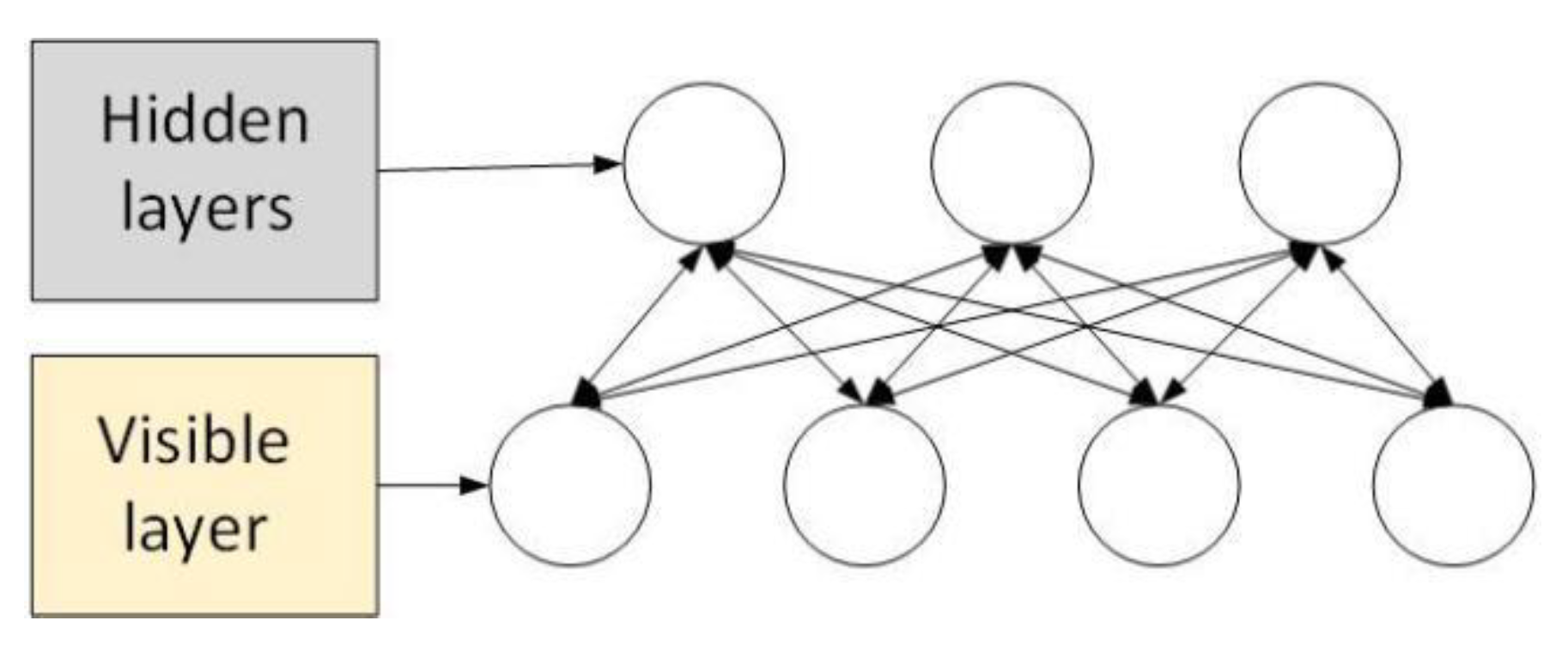
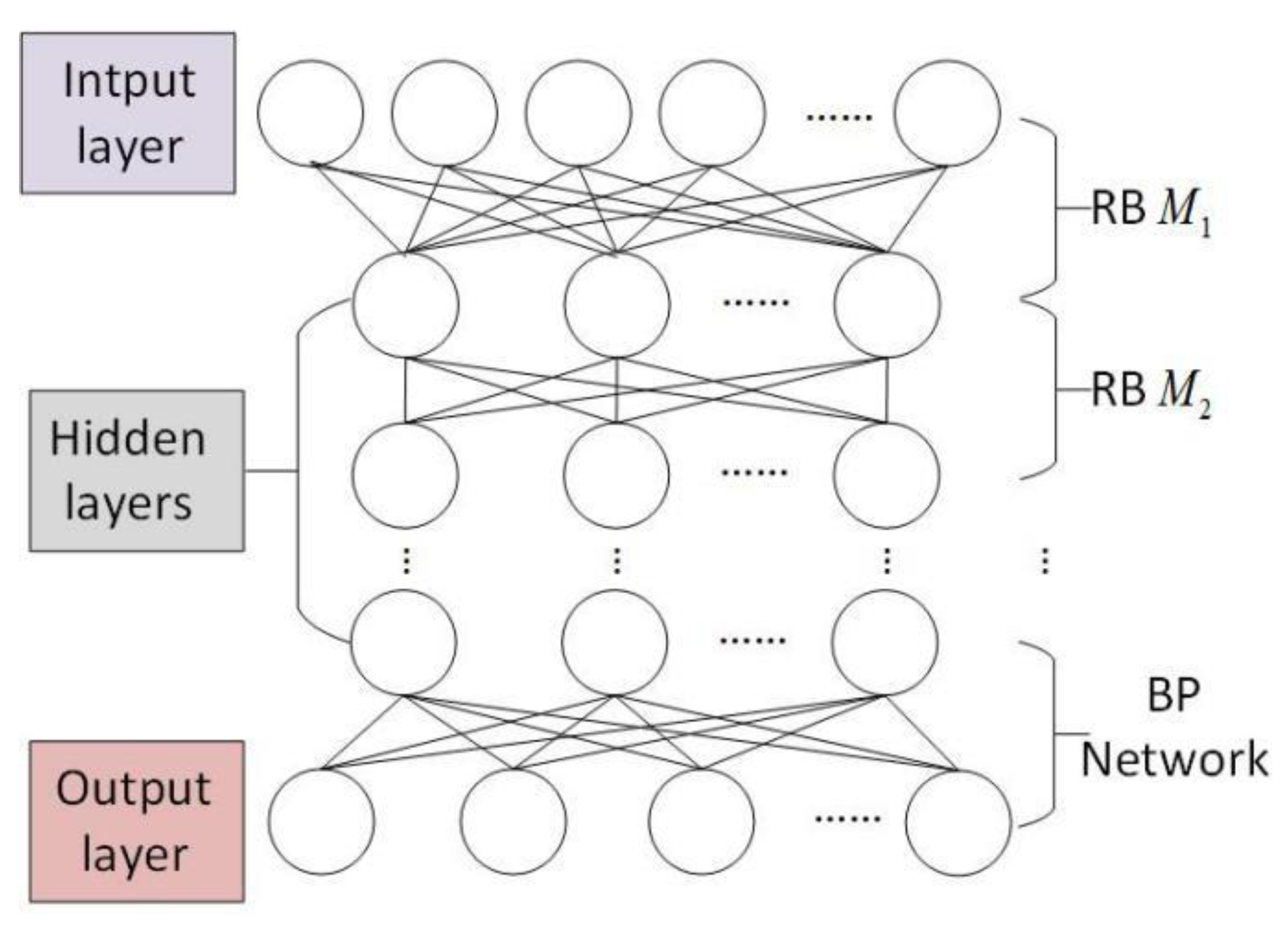
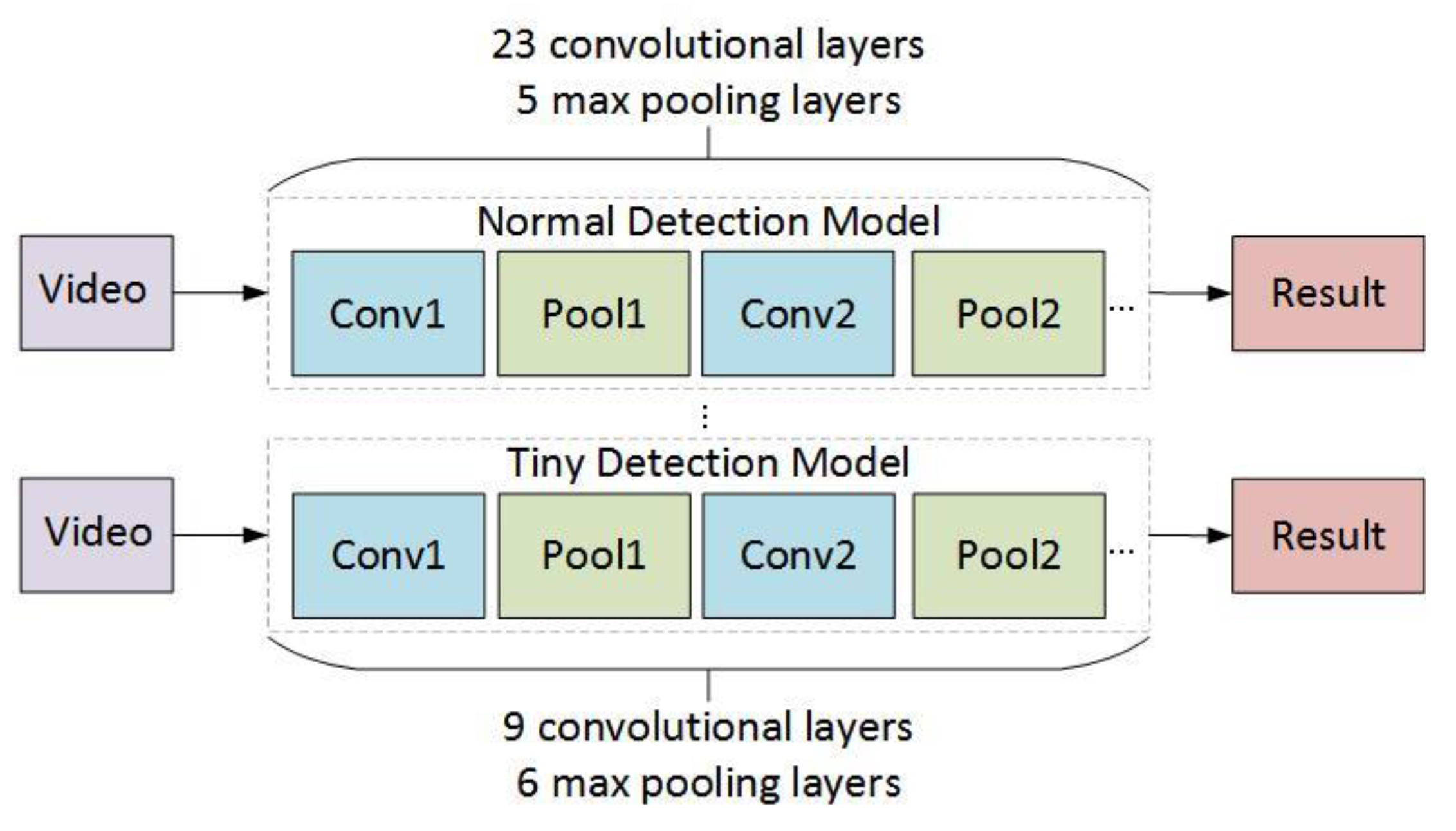
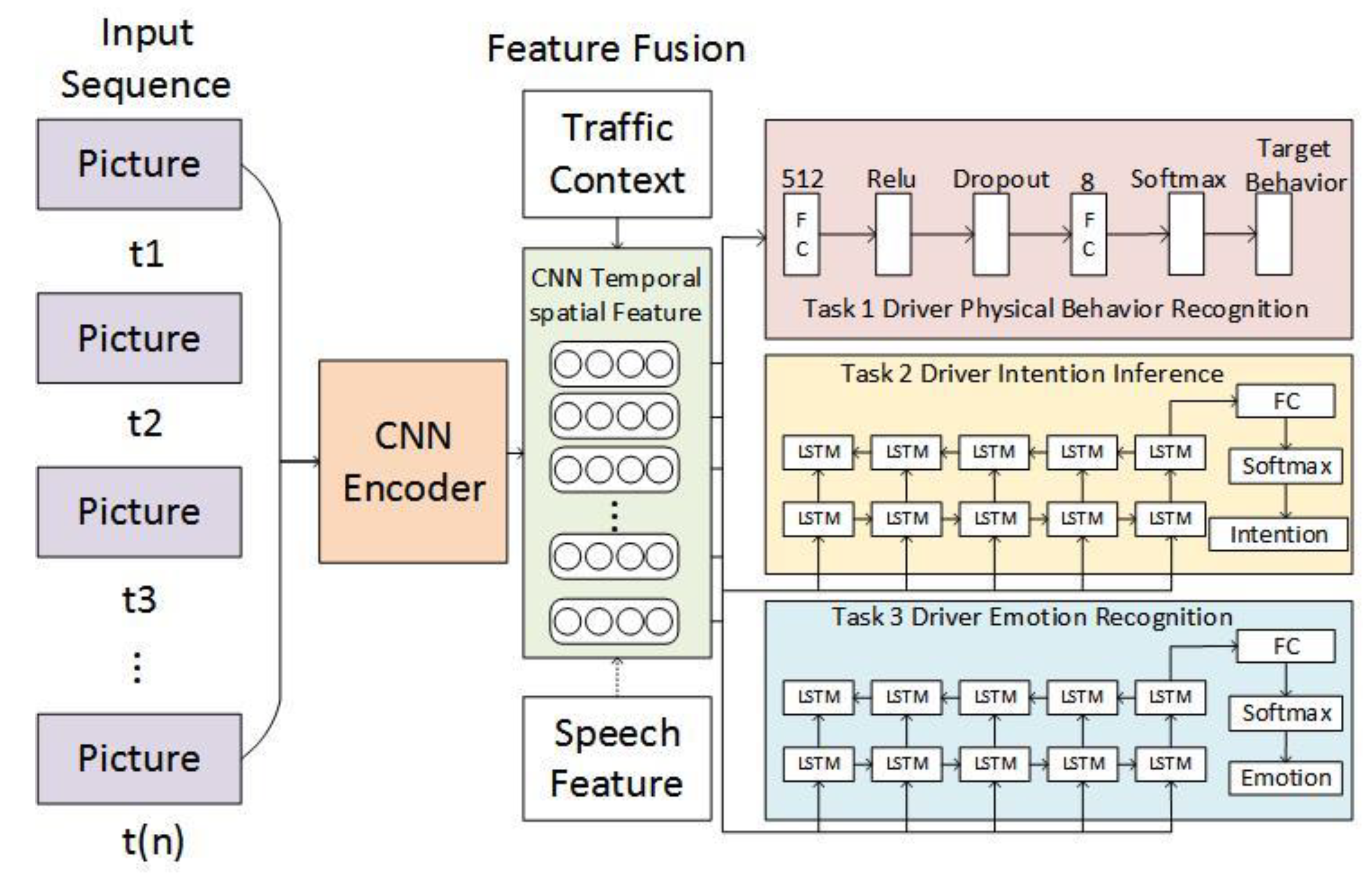
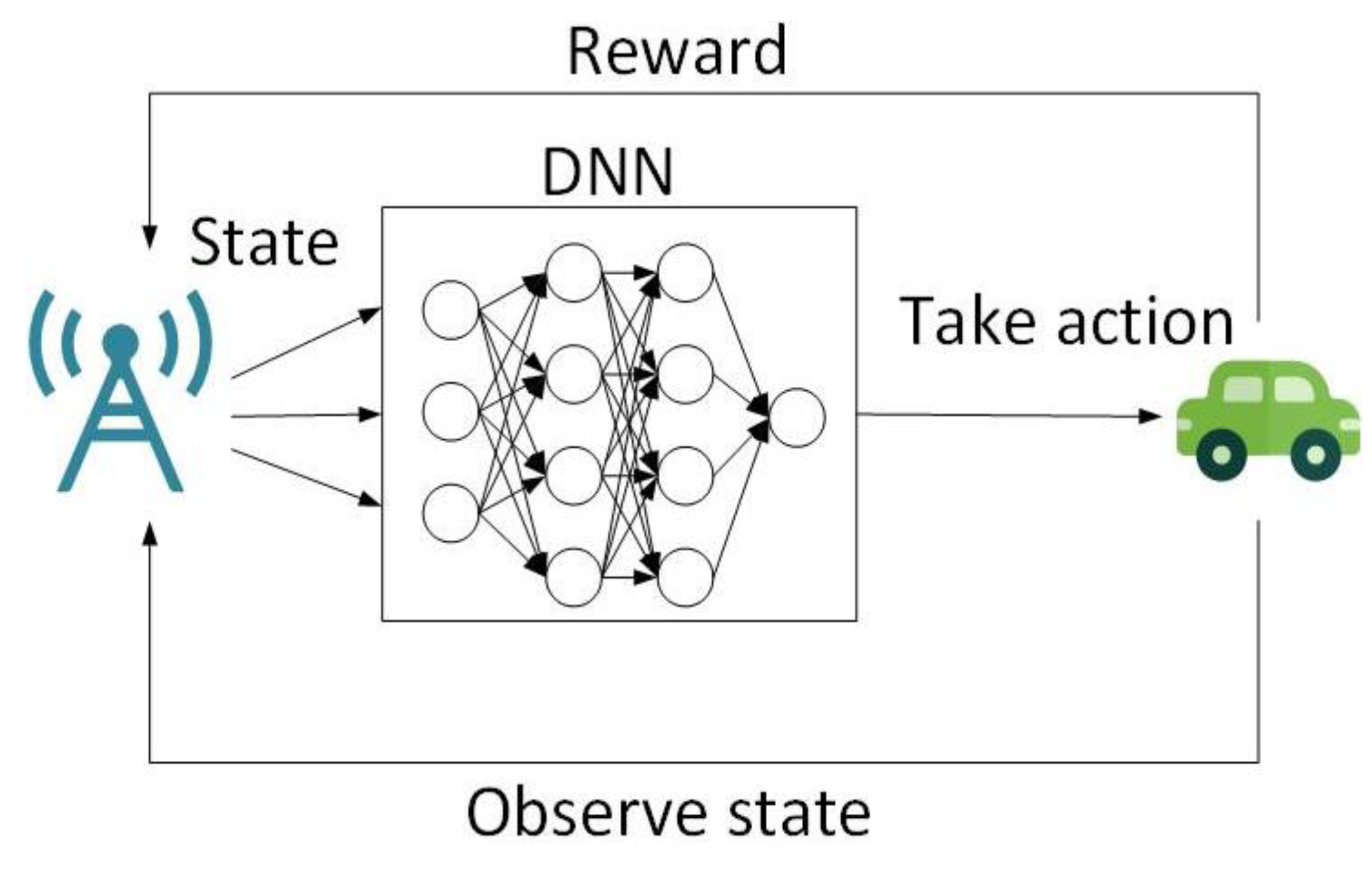


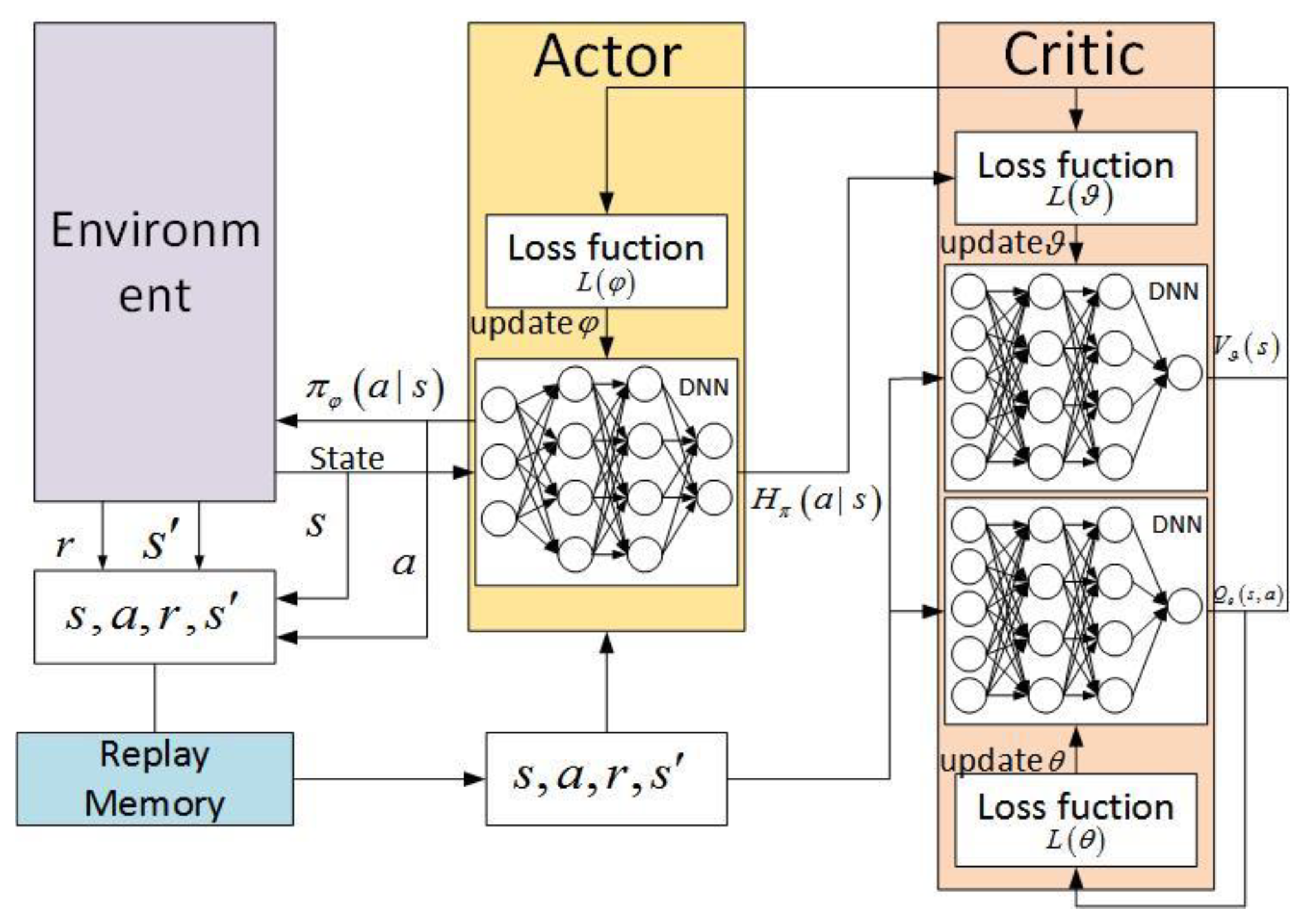
| Author | Accuracy | Recall | Precision | F-Measure | Method |
|---|---|---|---|---|---|
| Chen [36] | 0.8 | - | - | - | DL. |
| Kumar [37] | 0.98 | - | - | 0.87 | R-CNN |
| Priyadharshini [47] | 0.964 | - | - | - | R-CNN |
| Huang [55] | 0.8 | - | - | - | YOLO |
| Jeon [38] | 0.9 | - | - | - | CNN and LSTM |
| Akilan [39] | - | - | - | 0.95 | MvRF-CNN |
| Ma [41] | - | - | 0.7364 | - | CNN |
| Jeong [43] | - | 0.9949 | - | 0.9704 | CNN |
| Seal [50] | - | - | 0.515 | - | YOLOv3 |
| Kamran [48] | - | - | 0.6279 | - | R-CNN |
| Sreekumar [54] | - | - | 0.71 | - | YOLOv2 |
| Humberto [52] | - | - | 0.579 | - | YOLOv3 |
Publisher’s Note: MDPI stays neutral with regard to jurisdictional claims in published maps and institutional affiliations. |
© 2022 by the authors. Licensee MDPI, Basel, Switzerland. This article is an open access article distributed under the terms and conditions of the Creative Commons Attribution (CC BY) license (https://creativecommons.org/licenses/by/4.0/).
Share and Cite
Su, B.; Ju, Y.; Dai, L. Deep Learning for Video Application in Cooperative Vehicle-Infrastructure System: A Comprehensive Survey. Appl. Sci. 2022, 12, 6283. https://doi.org/10.3390/app12126283
Su B, Ju Y, Dai L. Deep Learning for Video Application in Cooperative Vehicle-Infrastructure System: A Comprehensive Survey. Applied Sciences. 2022; 12(12):6283. https://doi.org/10.3390/app12126283
Chicago/Turabian StyleSu, Beipo, Yongfeng Ju, and Liang Dai. 2022. "Deep Learning for Video Application in Cooperative Vehicle-Infrastructure System: A Comprehensive Survey" Applied Sciences 12, no. 12: 6283. https://doi.org/10.3390/app12126283
APA StyleSu, B., Ju, Y., & Dai, L. (2022). Deep Learning for Video Application in Cooperative Vehicle-Infrastructure System: A Comprehensive Survey. Applied Sciences, 12(12), 6283. https://doi.org/10.3390/app12126283





